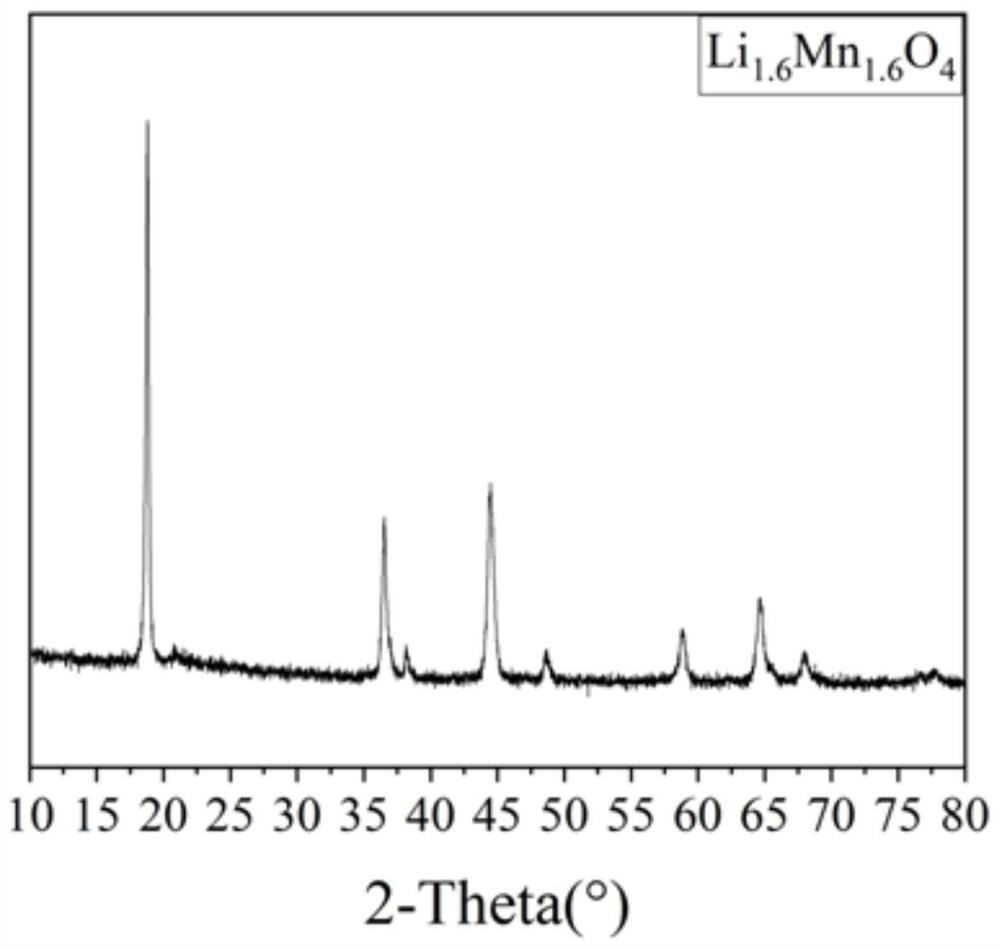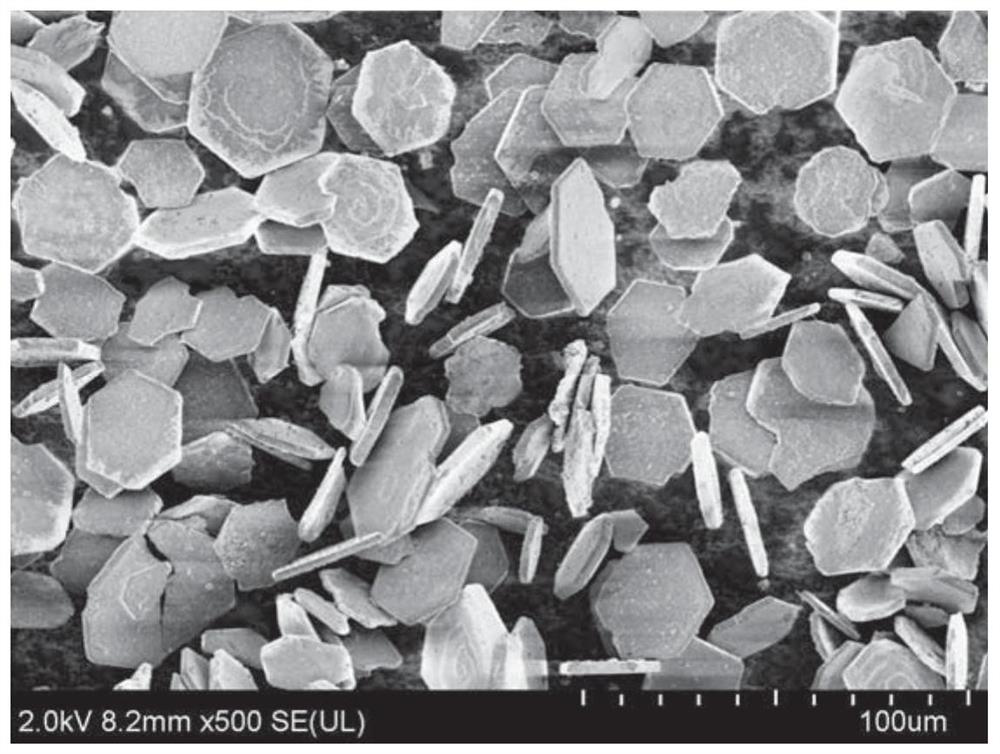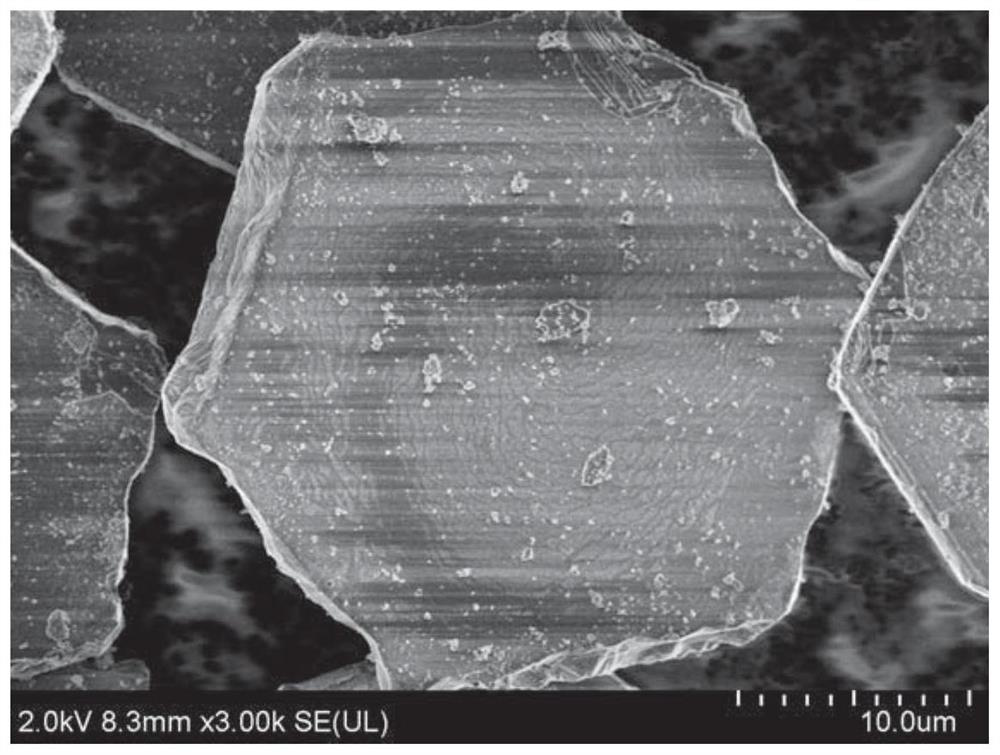A kind of hexagonal flake manganese series lithium ion sieve adsorbent and preparation method thereof
A hexagonal flake, lithium ion technology, applied in chemical instruments and methods, other chemical processes, alkali metal compounds, etc., can solve the problems of particle uniformity and dispersibility, and high energy consumption without using effective methods, and reduce the reaction time. Steps and the effects of preparation cost, good quality and high preparation efficiency
- Summary
- Abstract
- Description
- Claims
- Application Information
AI Technical Summary
Problems solved by technology
Method used
Image
Examples
preparation example Construction
[0028] As an aspect of the technical solution of the present invention, what it relates to is a preparation method of a hexagonal plate-shaped manganese series lithium ion sieve adsorbent, comprising the following steps:
[0029] (1) adding manganese source and lithium source into water, stirring to obtain the first mixed solution;
[0030] (2) adding an organic amine compound into the first mixed solution, and stirring to obtain a second mixed solution;
[0031] (3) Place the second mixed solution in a microwave reactor, react at 150-180° C. for 20-45 minutes, and then perform solid-liquid separation on the solid and liquid in the second mixed solution to obtain LiMnO 2 particles;
[0032] (4) the resulting LiMnO 2 The particles were calcined at 450-600°C for 3-6 hours to obtain Li 1.6 mn 1.6 o 4 Hexagonal flaky manganese-based lithium ion sieve adsorbent.
[0033] In some embodiments, the manganese source includes any one or two or more of potassium permanganate, sodiu...
Embodiment 1
[0049] (1) Sodium permanganate and lithium chloride were added into deionized water at a ratio of 0.15:1, and magnetically stirred to obtain the first mixed solution.
[0050] (2) Add ethylenediamine to the first mixed solution, the ratio of ethylenediamine to sodium permanganate is 5:1, mix and magnetically stir to obtain the second mixed solution.
[0051] (3) Put the second mixed solution into a microwave reactor at a temperature of 150° C. and a reaction time of 20 minutes. After the reaction is completed, the solid and liquid mixtures are subjected to solid-liquid separation to obtain solids that are washed and dried to obtain pure LiMnO 2 particles.
[0052] (4) LiMnO will be obtained 2 Calcined at 450°C for 3 hours to obtain Li 1.6 mn 1.6 o 4 Lithium ion adsorbent.
[0053] (5) Li will be obtained 1.6 mn 1.6 o 4 The lithium-ion adsorbent was exchanged and washed three times with deionized water and ethanol.
[0054] The XRD diffraction pattern of the hexagonal...
Embodiment 2
[0057] (1) Potassium permanganate and anhydrous lithium hydroxide were added into deionized water at a ratio of 0.8:1, and magnetically stirred to obtain a first mixed solution.
[0058] (2) Add ethylenediamine to the first mixed solution, the ratio of ethylenediamine to potassium permanganate is 80:1, mix and magnetically stir to obtain the second mixed solution.
[0059] (3) Put the second mixed liquid into a microwave reactor at a temperature of 180° C. and a reaction time of 45 minutes. After the reaction is completed, the solid and liquid mixtures are subjected to solid-liquid separation, and the solids obtained are washed and dried to obtain pure LiMnO 2 , particles.
[0060] (4) LiMnO will be obtained 2 Calcined at 600°C for 6 hours to obtain Li 1.6 mn 1.6 o 4 Lithium ion adsorbent.
[0061] (5) Li will be obtained 1.6 mn 1.6 o 4 The lithium-ion adsorbent was exchanged and washed three times with deionized water and ethanol.
PUM
 Login to View More
Login to View More Abstract
Description
Claims
Application Information
 Login to View More
Login to View More - R&D Engineer
- R&D Manager
- IP Professional
- Industry Leading Data Capabilities
- Powerful AI technology
- Patent DNA Extraction
Browse by: Latest US Patents, China's latest patents, Technical Efficacy Thesaurus, Application Domain, Technology Topic, Popular Technical Reports.
© 2024 PatSnap. All rights reserved.Legal|Privacy policy|Modern Slavery Act Transparency Statement|Sitemap|About US| Contact US: help@patsnap.com










